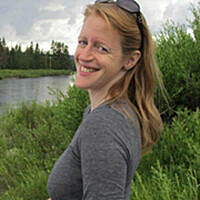Sinkhole: Disney World visitors walking on holey ground?
Loading...
Sinkholes have never struck Walt Disney World directly, though the terrain suggests that it could be vulnerable to them. On Sunday, a sinkhole opened up in a resort compound less than five miles from the theme park.
Sinkholes start with water and limestone, two things Florida has in abundance. Limestone dissolves in water, and the more acidic the water, the faster the limestone gets eaten away. What starts as a small hole deep underground can grow bigger and bigger until it's a cave you could walk upright in. Flowing ground water keeps dissolving away the top, sides, and bottom of a limestone cave, enlarging it in all directions. For people living on the surface above these caverns, there's no obvious sign that the ground beneath their feet is being eaten away from below.
Geophysical surveys can peer beneath the surface, but to the naked eye, everything looks fine. There's no sign that you're essentially walking on the surface of a hollowed-out eggshell.
And then a tipping point is reached, and the roof of the cave collapses – caves in, literally – along with everything that had been precariously perched above.
That's what geologists call "cover collapse." It happens quickly, though in the case of the sinkhole that opened in Florida late Sunday night, it started slowly, giving residents a few hours to evacuate from the surrounding buildings before the catastrophic collapse that lasted only a few seconds. Thanks to the rapid evacuation, no one was hurt, even though the 24-unit building has been written off as a total loss.
Officials say that the sinkhole is unlikely to grow any further. That's the one good thing about cover collapse sinkholes: Once the cavern below has collapsed in on itself, like an underground bubble bursting, it's over.
In addition to the immediate damage caused by the cover collapse, there's a secondary effect caused by the fractured limestone, warns Boo Hyun Nam, an engineer at the University of Central Florida. "Gasoline, heavy metals, organic compounds – whatever soluble toxic contaminants you had at the surface can, if there's a sinkhole, slip through cracks and reach the aquifer and damage drinking water quality."
Dr. Nam, who is looking for a way to predict sinkholes, describes cover collapse sinkholes this way: "We have a lot of voids (holes) in limestone. Then, on top of the limestone, we have a clay layer or a sand layer. If we have a clay layer, good. Clay has some cohesion," which gives it some strength to hold against the weight of overlying soil, roads, buildings, etc. "It will hold it, hold it, and then, all of the sudden, it cannot hold it, and BOOM, it collapses. That's a cover collapse."
The other type of sinkhole, more common in eastern Florida, is caused by "cover subsidence," and is common where sand sits atop the limestone. Loose grains of sand can slip down to fill the growing hole in the limestone. Over time, this causes a gradual lowering of the surface, as the sand migrates downward to fill the growing void below. Those sinkholes grow over the course of years or decades, says Nam.
Though the state of Florida is almost entirely built on limestone, not all Floridians are at equal risk of sinkholes. The northern part of the state typically has hundreds of feet of sand on top of the limestone, while much of southern Florida has a thick layer of clay protecting the surface, says Nam. Central Florida, however, has only thin layers of sand (to the east) or clay (to the west).
In fact, three central Florida counties to the west of Walt Disney World – Hernando, Pasco, and Hillsborough – have been dubbed "sinkhole alley," and are responsible for more than two-thirds of the state's sinkhole damage claims between 2006 and 2010. The sinkhole that opened near Walt Disney World on Sunday was in Lake County, which has had only a few sinkholes in the past, though the state geological survey's sinkhole map of Florida shows that Disney World is in the most sinkhole-prone type of terrain, where thin clay sits atop holey limestone.
As more and more people move south, enjoying the sunshine and drinking the water from Florida's aquifers, it will continue to change the underground flow of water, which can lead to an increasing frequency of sinkhole formation, adds Nam.
Nam and his colleagues are examining the factors that contribute to sinkhole formation – geochemistry, geology, water usage, local rain patterns, changing seasons, even sea level change – to discover where sinkholes are most likely to form, with hopes that they will ultimately be able to predict sinkholes.
By the way, if you want to prove to yourself that limestone dissolves in rain, just take a visit to a cemetery. Compare the gray gravestones to the white ones. The gray stones will be carved from basalt or granite, and the words and images there will be as clear as the day they were carved, even if they're hundreds of years old. The white stones are made from marble, which is limestone that has been metamorphosed by heat and pressure. Within decades, marble gravestones are hard to read; after a few centuries, they can be almost completely smooth. If that's what sporadic rainfall can do in human timescales, just imagine what constantly flowing ground water can do to limestone caves.








